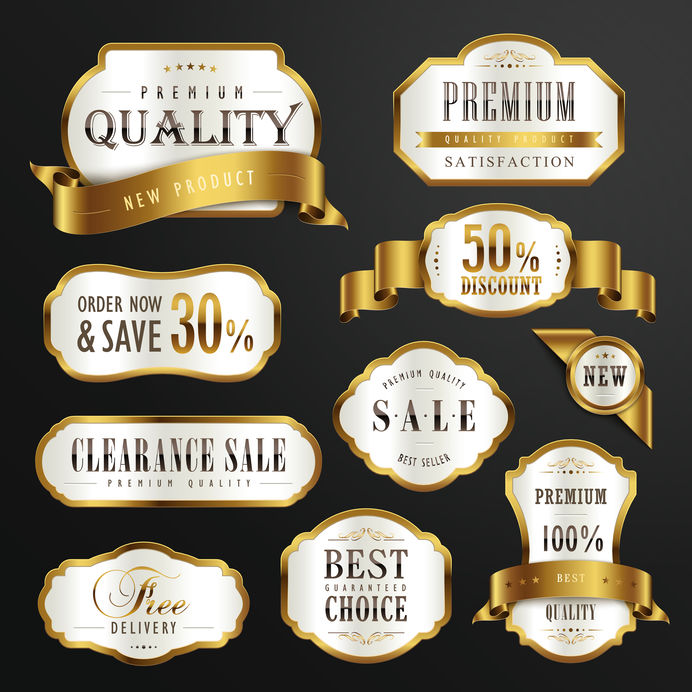Types of Business Labels
There are two types of business labels – permanent and removable business labels.
- Permanent Labels

These are business labels that stay on the surface of the product as long as the product is being used. Usually, they are made of eco-friendly material to ensure that it does not affect the quality and safety of the product. A good example is a branded logo on a car; it stays in the car as long as the car is usable. Most permanent labels are hard to come off by themselves, unless they are removed, in which case great effort must be applied. They are mainly used on products and items that are used for a very long time. Permanent labels are also designed to resist several factors such as heat and water.
- Removable Labels
These, on the other hand, are labels put on perishable products like foodstuffs. They stay on the product for as long as the consumer has started using the products. In short, they can be said to be short-term labels. In most cases, the labels come off the surface of the product by themselves. With these kinds of labels, durability and resistance to elements are not a priority.
Uses of Business Labels
Business labels are important for any company expenditure. At times, it takes a big share as far as operational costs are concerned. They speak a lot about the product and the manufacturing company in general. They are the face of the product and thus are accorded so much concern. Usually, they are designed and printed by professionals to ensure authenticity, uniqueness, and quality.
- To Show the Composition of Products
In most cases, labels are used to carry information such as ingredients of certain products. For example, the FDA requires that labels on foodstuffs must carry clear information about the ingredients present in that particular item. The labels should also indicate the ingredients by percentage. Alcoholic drinks, for example, should indicate the percentage of alcohol in that particular drink.
- To Indicate Warning
A business label is also used to indicate warnings of certain products. For example, medicines contain warnings that the drugs are not for use by people with certain conditions. Such information helps such a warned group keep away from these products for their safety. Some foodstuffs also contain warning that they contain gluten or peanuts so that allergic consumers can avoid using them.
- To Show Regulatory Adherence
Some labels also contain information showing that the manufacturer of that particular product has complied with all the guidelines of the regulating authority or agency. Such information helps consumers know that the product they are about to use or buy is authentic, certified and approved for use by humans.
- To Inform About the Manufacturing Company
Most of the time, labels include the name or brand logo of the company that manufactured it. It may not be an actual name but instead, a logo design that is unique to that particular company. It is usually a patented property of that particular brand and should anyone else use it, they are liable to a legal suit under the copyrights act of the constitution. The brand name and logo are designed to promote the product and the manufacturing company in general.
A business label should be visible and clear enough for everyone to be able to read it from afar. It should also be something unique and authentic such that when people see it, your brand is the first thing that comes in their mind. You should strive to make a great and creative business label. It is advisable to look for a great label designer to help you in designing a great label for your business. A poor business can cost you lots of money since they send your customers the wrong message. They will not take you seriously and they might even think you are not legit.

